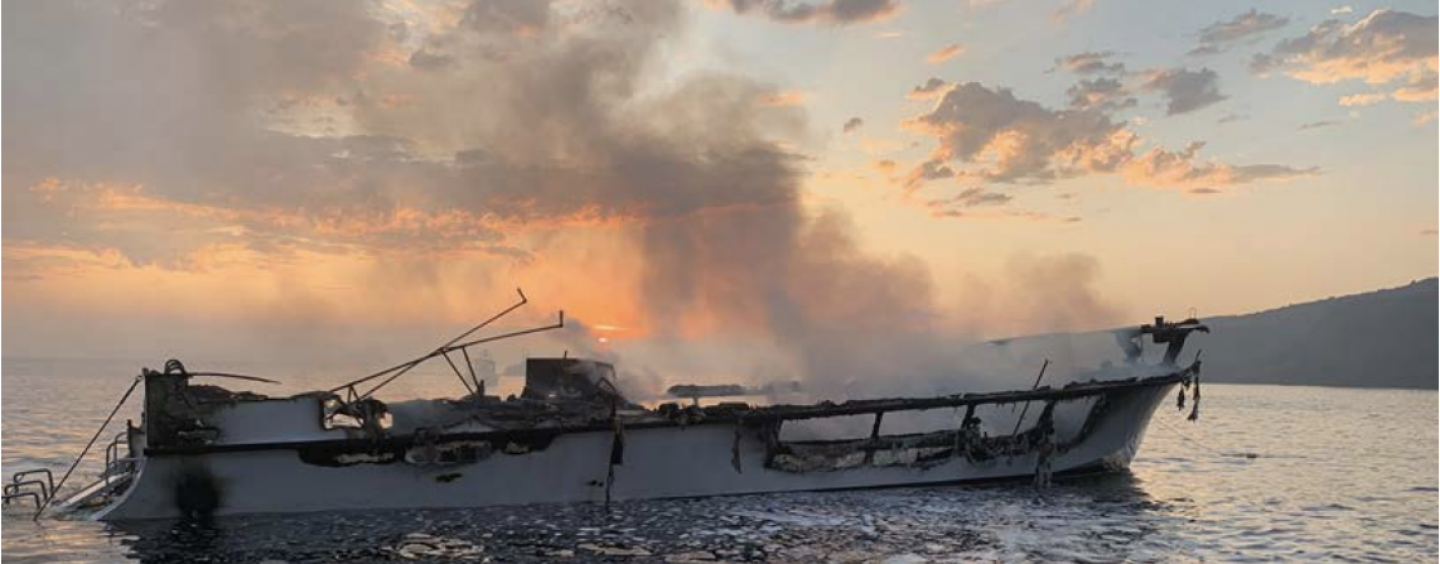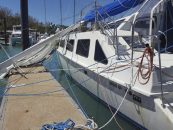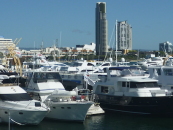FIRE TRAGEDY – A REMINDER OF SAFE MANAGEMENT SYSTEM REQUIREMENTS
An incident causing the death of a person is always tragic. But imagine that you are held responsible for the death of 34 people, and you know you could have done more to protect them.
FIRE ABOARD: CONCEPTION – On 2 September 2019, 34 people perished in a fire aboard the 22.8 metre flagged passenger vessel Conception off the coast of Santa Cruz, California.
At the time the fire broke out, five of the crew members were asleep in the crew berthing area on the upper deck. One crew member and 33 passengers were asleep in the bunkroom below.
A crew member on the upper deck noticed a glow outside and realised a fire was rising up from the saloon compartment directly below.
The master was able to get a distress message to the coast guard, while the crew members from the top deck tried to access the saloon deck, but it was blocked by fire and thick smoke.
By the time the Coast Guard arrived 90 minutes later, the vessel could not be saved and all on the saloon deck perished.
FINDINGS – Although, there was no root cause found, there was a range of failures contributing to the deaths, including:
- the electrical distribution system inadequate;
- unattended batteries being charged;
- improperly discarded smoking materials;
- the lack of smoke detectors on the saloon deck delaying fire detection and allowing the growth of the fire;
- the absence of roving patrols delayed the detection of the fire;
- the bunkroom escape arrangements were inadequate, as both means of escape led to the same point, and the fire blocked their escape;
- Conception’s operator provided ineffective oversight of the vessel’s operations, placing the vessel crew and passengers at risk
- no Safety Management System (SMS) in place, therefore, no risk identification
or hazard reduction methods implemented to minimise the risk of fire.
REMINDER – Under Section 4 of Marine Order 504 – Certificates of operation and operation requirements – national law requires that when applying for a Certificate of Operation, a declaration is required to have a Safety Management System in place for each vessel that the application relates.
Recent Australian Maritime Safety Authority (AMSA) inspection campaigns have across 326 vessels, uncovered some 829 instances of poor fire-fighting maintenance.
AMSA identified the most common types of non-conformances to include:
- fire pumps unable to supply adequate water pressure to fight a fire;
- fire extinguishers not maintained in accordance with AS1851:2012;
- poorly maintained fire insulation, protection and suppression systems;
- emergency shut-offs not functioning as required; and
- fire detectors not functioning.
RECOMMENDATIONS – It is highly recommended to:
- Regularly review your risk assessments for operation and update your safety management plans as required.
- Review your escape management plans and conduct exercises to ensure that the crew understand their roles and passengers are aware of the requirements;
- Consider the watch requirements for early fire detection;
- Ensure that fire-fighting equipment are tested and maintained;
- Ensure that smoke systems are installed, maintained, tested and allow for proper coverage; and,
- Ensure that the electrical system is correctly installed and can cope with a large number of portable charging devices, such as phones, tablets, cameras and computers that all use lithium-ion batteries.
By Anthony (Mick) Apps, Law Graduate






























